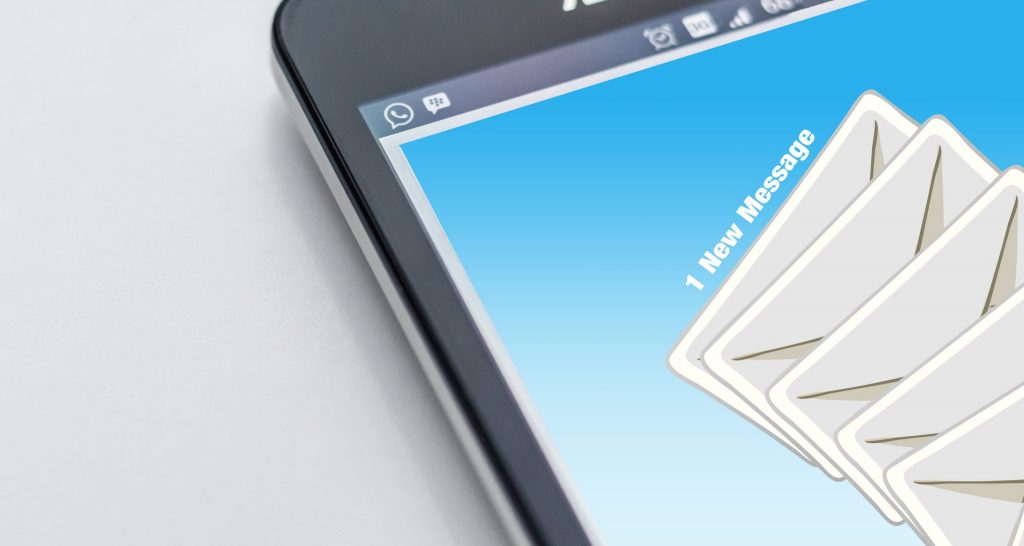The world may have adopted newer styles of communication but, you simply cannot ignore email, as it is one of the primary and most often used mode of communication. Despite being the oldest form of digital communication, it is still relevant and effective in the current times.
99% of consumers check their emails on a daily basis.
59% of the people claimed that email marketing did influence their purchase decisions.
These statistics go on to prove the point made earlier on the effectiveness and relevancy of emails in the current time and age. However, it is not enough to just draft an email and send it through a mass email service; you need to think through the complete anatomy of the email and define the various parts in a way that will grab the audience’s attention and make them convert.
Download Branding Resources Guide
Building a brand starts by having the right tools and advice. Download our top 10 essential tools and resources to kick-start your branding.

The two most crucial elements of email design are the header and the footer. Most marketers don’t really give importance to these two aspects when designing the email, but it is one of the reasons you gain success with your emails.
Designing the Header: Start with an Impact

The header is the first thing that connects with the audience when they open the email. Your header should not only grab the audience’s attention but also manage to set the tone and expectations for the email. It is the header that will decide whether the target will read your email contents or not.
Here’s what a good header does for your brand:
- The branding is clearly defined with the header, and the recipient is well aware who the sender of the email was. Secondly, it resonates with the branding elements and ensures there is a quick connection between the email and the audience reading it.
- The header is generally short and precise and mentions what the email is about in those few words. The reader can skim through the content with ease if the header is defined properly, and they will know whether their attention is required for the rest of the copy or not.
- The same header can be used across the different email campaigns, thus calling for consistency of the emails sent out by the brand. The user would know who they are receiving the email from, and this consistency helps build the brand’s image and also the engagement rate.
Header Design Best Practices
- Image Size: If you are adding an image to the header of the email that you are planning to send out, then you need to keep in mind that the header’s height is no more than 350px. Once the image size is fixed, your header should include the following three elements that make up for the branding and consistency of email headers.
- The first part of the email header is the branding, which means you should identify your company’s name and logo in the header image itself. By identifying yourself to the audience, you are increasing the trust and recognition for your brand.
- What is the email about? For instance, is your email transactional or event related? The email header should pronounce the kind of email you are sending to the readers. This will help your audience understand whether or not the email is relevant to them.
- The CTA should be kept in the first fold itself so that the users are compelled to take the action, and you can accomplish your goals. However, designing the CTA and getting users to take action can be quite complicated if you have not conveyed the entire message in a single line. Make sure your header content talks about what to expect in an easy-to-understand manner.
- Simplicity: When designing the header, you should keep it as easy and functional as possible. Navigating through the menu placed in the header should be intuitive. The images in your email should be segregated from the design so that neither overpowers the other, and the focus message remains clear. Keep the email header design minimal and use a simple structure to define it.
- Colors: When designing the header image, make it a point to use contrasting colors along with calls-to-action that stand out to make the desired impression on the readers. The idea is to grab the eyes with effective and incredible designs.
- Content: This is an important aspect of the header that you design. You need to include content that matches the overall design. Eye-catching font colors and modern design will help your content stand out amidst the competition.
Some interesting examples of header designs by top brands
The above image shows how National Geographic has included the CTA in the first fold and clearly enabled the different branding elements in the header image.
The above image shows how precise the content is for the header image. It sets the tone and pace for the remaining email for the readers.
Designing the Footer: The Perfect Ending
If the reader manages to skim through the entire email, the last thing they would read in the email would be the footer. The footer is your last chance to connect with the readers and offer them some valuable information, which has not been mentioned throughout the email.
Here’s what a good footer does for your brand:
- It attempts to remove all the unrelated information and helps streamline the entire communication of the email with minimal words or phrases.
- The terms and conditions are part of the footer content. Such things help the readers gain transparency and will allow them to understand what the promotion is all about.
- There are a few steps mentioned in the footer, in case of promotions, which assures the user about the direction they need to take to complete the transaction of any kind.
Footer Design Best Practices
- Inclusions: When designing the footer, there are a few elements that you cannot ignore. Here are the footer inclusions that are a must
- A backlink to your site is essential – either to a site page or to the blog, depending on where you want to take the user. The users should understand a bit more about your website and your brand, and the footer link is the only way for that.
- The mailing address is important as readers should know where to contact you for more information. Also, include other contact information such as your email address and phone number.
- The social media links should be placed along the footer. Use social media icons and link them to your social media pages so that the users can gain more insights about your brand.
- You can also add a sign-up link, a menu and other such information in the footer if needed.
- Don’t forget to add copyright information as well as a link to the privacy policy in the footer.
- Simple & precise: The design of the should be simple and insightful. It should grab the user’s attention with the content placed in it. Don’t try to stuff too much information into the footer. Focus on the central message while designing the footer, and just include what you believe works for the readers.
- Organize it: It is important to organize the content in the footer in a defined manner. You ought to make sure that the content has a hierarchy, which is based on the kind of actions you want the user to take. You should direct the users towards one action at a time.
- Space it out: Take up the space to communicate every part of the email footer in a defined manner. Don’t cramp up the content just to reduce the space as that will have a negative impact on the readers.
- Signoff: It is important that you have a signoff that you can use with the mass emails you send to customers. It could be playful or serious, depending on the image you are trying to carve for your brand.
Some interesting examples of header designs by top brands
You can see how well organized and hierarchy-based arrangement in the footer design looks like. It gives the reader clarity on what is expected of them first, and what are the various actions they can take.
The perfect signoff can be seen in the Google Home hub email in the form of “was this email helpful?”.
You also see add-on content like copyright and privacy policies in the footer in a defined manner. The social icons are well spaced out that makes it a perfect example of an email footer.
Wrap up

If email marketing is important to you, then you ought to look into every element of the email and ensure that they are properly designed and defined.
The header and footer play an important role in enhancing the overall appeal of the email and increasing email engagement.
Both the header and footer should be designed carefully and should be simple and intuitive. The content should specifically convey what you want to say throughout the email, for the header. In the case of the footer, the content should convey that you have ended the email and offer some more valuable information to the users. Links to the websites or other social sites can help the user know more about you as a brand, and bring higher conversions for you.
Author Bio
Chris Donald is the Director of InboxGroup, A professional email marketing agency that specializes in providing result-driven email marketing services. He has worked directly with Fortune 500 companies, retail giants, nonprofits, SMBs and government bodies in all facets of their email marketing services email audit and marketing automation programs for almost 2 decades. He enjoys sharing his distinctive thoughts and insights into email marketing best practices at his blog.


